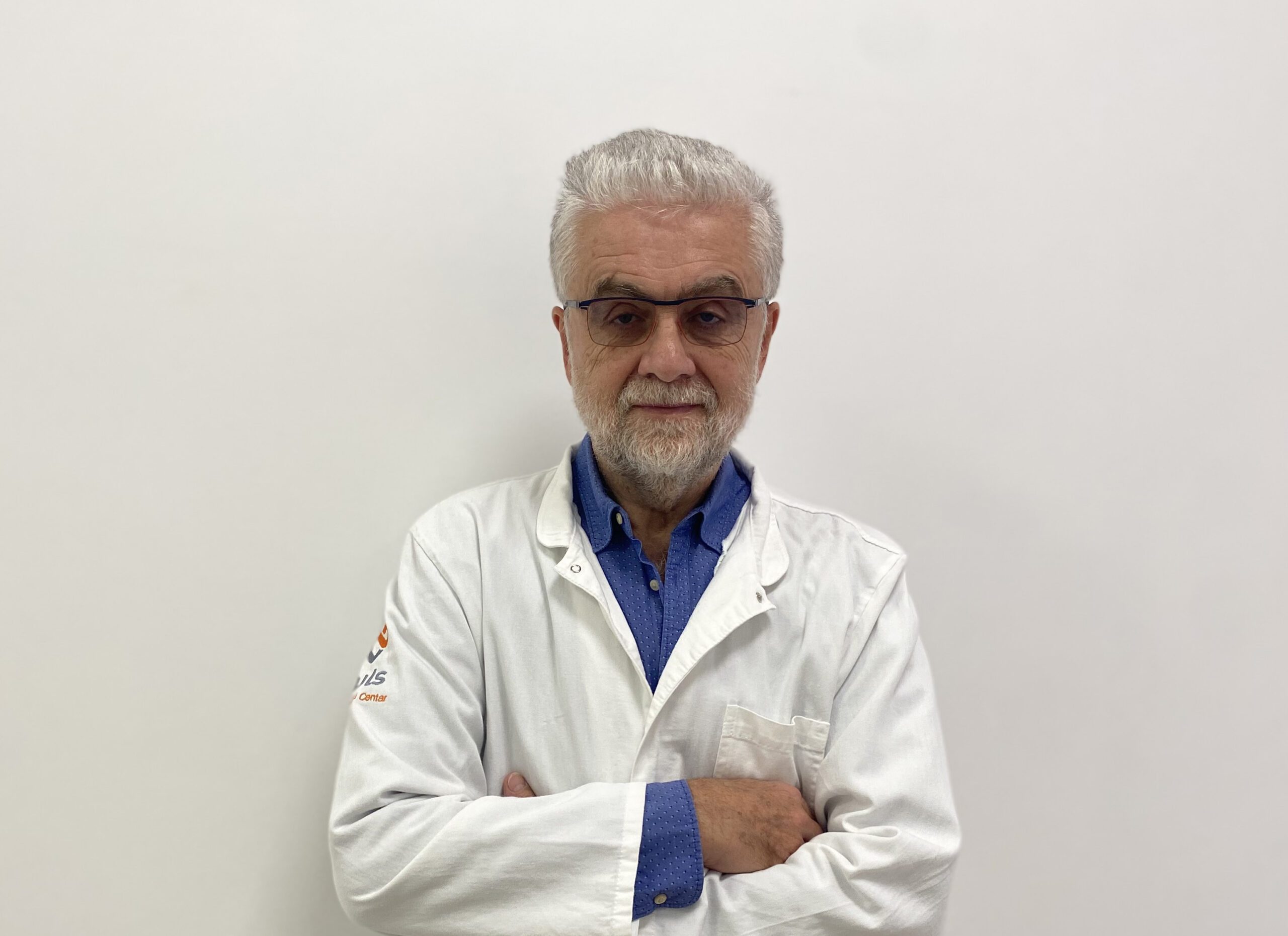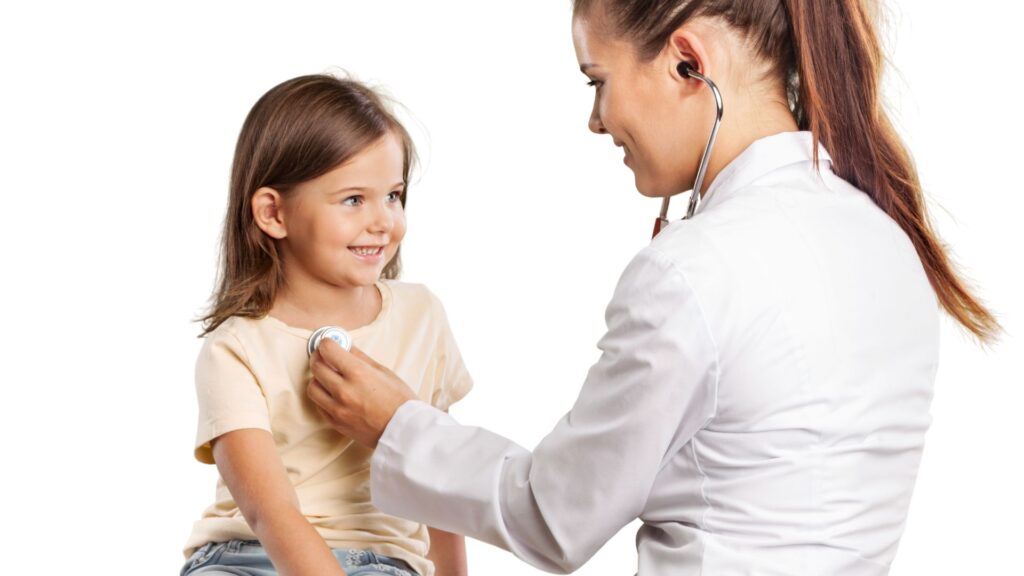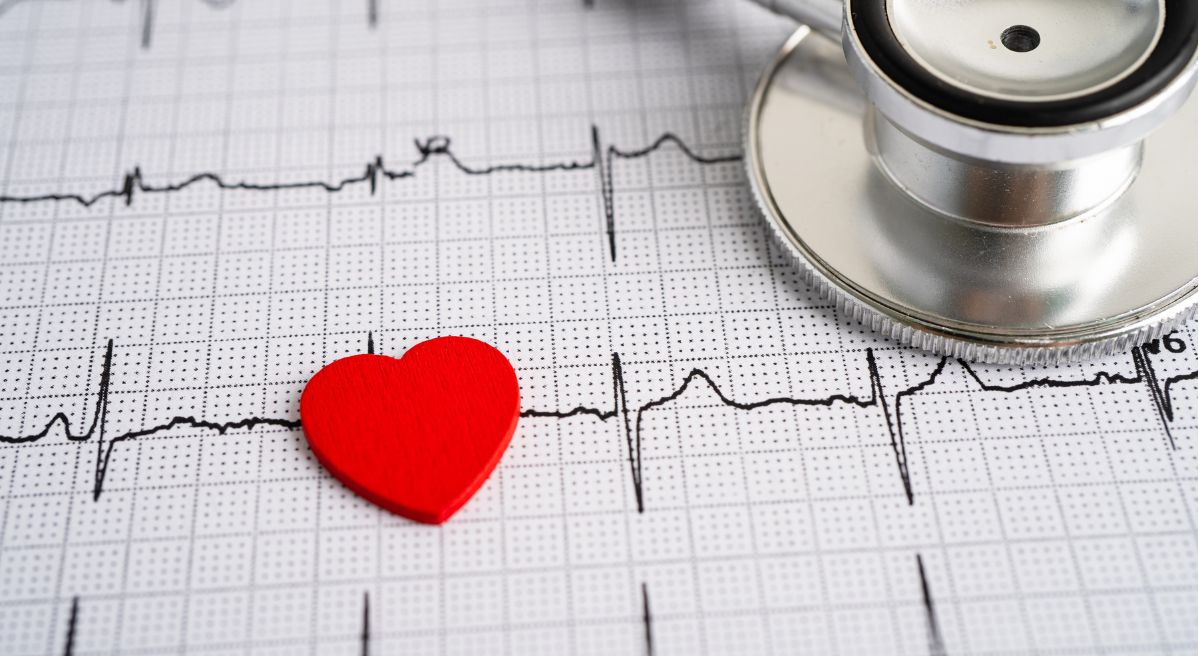Arrhythmias or heart rhythm disorders in children are very common and often unnecessarily worry parents. However, although arrhythmia can be transient and harmless, the assessment of the condition should be made exclusively by a pediatric cardiologist. Common symptoms of arrhythmia in children include chest palpitations, the sensation of skipped heartbeats, fatigue, dizziness, fainting, chest pressure, and shortness of breath. These symptoms indicate that it is necessary to take the child to a doctor. In more severe cases of arrhythmia, a child may collapse or experience sudden cardiac arrest, requiring emergency medical intervention.
In the case of arrhythmia symptoms, you can bring your child to PULSE Cardiology Center, to the Department of Pediatric Cardiology, where they will be examined by the distinguished and globally recognized expert in pediatric cardiology, Prof. Dr. Jovan Košutić.

Causes of arrhythmia in children
The main causes of arrhythmia in children are changes in cardiac tissue, alterations in the electrical signals that control heartbeats, heart damage due to disease or injury, as well as genetics. Surgery on an open heart can also be a cause of arrhythmia in children.
Some arrhythmias do not require treatment, but certain rhythm disorders require long-term therapy or surgical intervention.
Heart rate in children
Arrhythmia is a condition characterized by an abnormal heart rhythm. The heart can beat too slowly (below 60 beats per minute – bradycardia), too fast (over 100 beats per minute – tachycardia), or irregularly (extrasystole, tachyarrhythmia, or bradyarrhythmia).
However, in children, normal heart rate values depend on age, body weight, and height. The smaller the child, the faster the heart rate. When a baby is born, the upper limit is 220 beats per minute, and during the first year, it ranges from 160 to 180 beats per minute. In children up to the age of seven, the upper limit is around 120 beats per minute, and heart rate values in school-age children and adolescents are calculated similarly to adults. Therefore, any value exceeding 100 beats per minute should be evaluated by a doctor. The resting heart rate of an athlete should be around 50 beats per minute.
Normal pulse values in children
Age Pulse (upper limit per minute)
At birth 220
Up to one year 160-180
Up to 7 years 120
Older 100
Athlete 50
Diagnosing arrhythmia in children
Diagnosing arrhythmia in children can sometimes be challenging because a child may not be able to explain their symptoms. Some arrhythmias may not cause noticeable symptoms. Therefore, arrhythmia is often detected during routine health check-ups or sports examinations (performed if the child is engaged in sports activities). If a doctor suspects that a child has arrhythmia, a thorough examination of the child will be conducted.
The doctor’s examination may include:
Taking the child’s medical history – gathering information about symptoms, complaints, duration of symptoms, medication usage (some medications can contribute to the occurrence of arrhythmias), overall health status.
- Electrocardiogram (ECG) – measures and records the electrical activity of the heart.
- 24-hour Holter monitoring – The Holter monitor tracks the electrical activity of the heart for 24 hours or longer to provide additional data for analysis by the doctor.
- Echocardiogram (Cardiac Ultrasound) – A painless procedure that uses sound waves to create images of the size, structure, and motion of the heart.
Some arrhythmias may require long-term treatment or intervention, but it is crucial to detect and treat them in a timely manner to prevent them from affecting the child’s overall health and development. These are some of the disorders of the heart rhythm.
How the heart works normally
In order to understand how arrhythmias occur, it is necessary to know how the heart functions normally.
The heart consists of four chambers. The upper chambers are called atria, and the lower two are ventricles. The normal heart rhythm is controlled by the natural pacemaker, known as the sinus node, located in the right atrium. The sinus node generates electrical impulses necessary for each heartbeat. These impulses cause the atria to contract, pumping blood into the ventricles. The impulses then reach the atrioventricular node, which slows them down before they reach the ventricles. This delay allows for proper ventricular filling. This is followed by the contraction of the ventricles, pumping blood to the lungs and the rest of the body through the aorta. The normal heart rate ranges between 60 and 100 beats per minute.
When is tachycardia considered a normal occurrence in children?
When it comes to children, an accelerated heart rate or tachycardia can be considered a normal occurrence in certain situations such as:
- Physical activity
- High emotional stress
- Elevated body temperature
- Bronchitis and allergies
The common characteristic of these harmless episodes of tachycardia is that they subside once the underlying cause has ceased.

Tachycardia in children that requires monitoring
Two main types of tachycardia that affect children are sinus tachycardia and supraventricular tachycardia. Sinus tachycardia, characterized by a heart rate higher than 100 beats per minute, often occurs as a result of physical activity, elevated temperature, or emotional stress. It is common in children and usually does not require treatment. Supraventricular tachycardia encompasses various forms of arrhythmias initiated by impulses from the atria. The heart rate in this case ranges from 100 to 250 beats per minute. It is not life-threatening for most children and typically does not require treatment. Treatment will be necessary for the child only if the episodes of arrhythmia are prolonged or frequent.
Wolff-Parkinson-White syndrome
Wolff-Parkinson-White syndrome is the presence of an additional abnormal electrical pathway in the heart that causes tachycardia, or rapid heart rate.
The syndrome is present from birth, and symptoms such as palpitations, dizziness, and fainting may occur at any age. Medications often can improve this condition in children. If medications are ineffective, a child may undergo alternative treatments such as radiofrequency catheter ablation or surgical intervention.
Ventricular tachycardia – a serious condition
Ventricular tachycardia (VT) is a rapid heart rate that originates in the lower chambers (ventricles) of the heart. This type occurs as a result of the presence of an ectopic focus in the ventricles. It is characterized by a series of three or more beats with a frequency between 120 and 200 beats per minute. If a child has VT, they may experience dizziness, palpitations, chest pain, and shortness of breath. This is a rare condition in children but can be very serious and requires immediate medical attention.
Long QT syndrome
Long QT syndrome is a disorder of the electrical system that occurs in the lower chambers (ventricles) of the heart and carries the risk of fast, irregular heartbeats. This condition is inherited, meaning that a child is born with the disorder and lives with it throughout their life. People with long QT syndrome may experience irregular heart rhythms in response to emotional stress, surprises, or physical exertion. Children may not have any symptoms at all. However, some children may experience fainting, irregular heartbeats, and palpitations.
Heart palpitations in children
Premature contractions of the heart (premature ventricular contractions) can cause an irregular heart rhythm in a child. The child often perceives stronger heartbeats as if their heart has skipped a beat. Premature contractions are common in children and teenagers. The cause of these contractions, which lead to heart palpitations in children, is often unknown and usually resolves without any treatment.
Slow heart rate in children – bradycardia
Bradycardia refers to a slow heart rate and is rare in children. What doctors consider low heart rates depends on several factors, such as the child’s age and level of physical activity. Normal heart rate values for children decrease as the child grows older. If a child has bradycardia, they may experience fatigue, weakness, dizziness, and confusion. Bradycardia doesn’t always require treatment. However, if there is an underlying cause of bradycardia in a child, doctors will treat that underlying cause.
Sick sinus syndrome
Sick sinus syndrome is the term used for a group of arrhythmias in which the sinus node (the heart’s natural pacemaker) does not function properly, resulting in the slowing down or speeding up of a child’s heart rate. This can lead to the development of bradycardia or tachycardia in a child. If a child has sick sinus syndrome, they may not have any symptoms. Some children may experience symptoms including dizziness, fatigue, and fainting. Treatment involves medication and, if necessary, the implantation of a pacemaker.
Complete heart block in children
If a child has complete heart block, the electrical signals of their heart do not pass normally from the atria to the ventricles. Without receiving electrical impulses from the sinus node, the ventricles continue to contract and pump blood, but at a significantly slower rate. Depending on the degree, complete heart block may require the implantation of a pacemaker.
Treatment of arrhythmias in children
Different types of arrhythmias require different treatments. However, common treatments for arrhythmias in children include medication, pacemaker implantation, surgery, or radiofrequency ablation of the heart.
Life of children with arrhythmias
A child with an arrhythmia can lead a fulfilling life. However, some types of arrhythmias are more serious than others, and some increase the risk of heart disease and stroke. The doctor will provide recommendations on activities or medications the child should avoid. Parents should regularly check their child’s pulse and learn how to help the child slow down their heart rate. Doctors also recommend performing the Valsalva maneuver to decrease the child’s heart rate. This maneuver involves the child closing their nose and mouth before straining to exhale.





